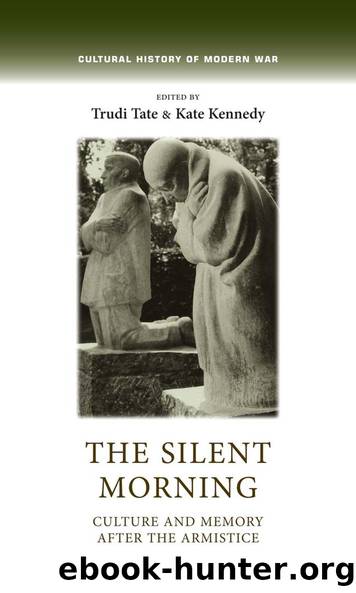The silent morning by Trudi Tate Kate Kennedy

Author:Trudi Tate, Kate Kennedy [Trudi Tate, Kate Kennedy]
Language: eng
Format: epub
ISBN: 9781526103406
Barnesnoble:
Publisher: Manchester University Press
Published: 2016-01-04T00:00:00+00:00
8
âMisunderstood ⦠mainly because of my Jewishnessâ: Arthur Schnitzler after the First World War
Max Haberich
In the first third of the twentieth century, Arthur Schnitzler was one of the most prominent literary figures in Europe. He was one of the first writers to make use of Freudâs ideas, exploring his charactersâ psyches to understand their rational or irrational motives. He introduced the âstream of consciousnessâ technique into German literature twenty years before Ulysses. His work was translated into English, French, Italian, Swedish, Russian and Japanese. MGM Studios used a novella of his for one of their early movies, Daybreak (1931).
Schnitzler spent his entire life in Vienna, from 1862 until 1931. He read medicine at the University of Vienna, and obtained his doctorate when he was twenty-three. He was one of the founding members of Young Vienna, a literary circle which included Hugo von Hofmannsthal, Felix Salten and Hermann Bahr. Schnitzler celebrated his first major success on the stage with Liebelei (Flirtation, 1895), and he was immediately recognised as being at the forefront of the Austrian literary avant-garde. He corresponded with many great German writers of the time: Thomas and Heinrich Mann, Hermann Hesse and Stefan Zweig.
He reached his prime at the Viennese Burgtheater with dramas such as Das weite Land (The Open Land, 1911) and Professor Bernhardi (1912). Throughout his literary career, he also produced a substantial number of short stories. Of these works, the two stream-of-consciousness novellas, Leutnant Gustl (1900), from the male perspective, and Fräulein Else (1924), from the female, are perhaps the most noteworthy. Schnitzler wrote two novels, the first of which, Der Weg ins Freie (The Way into the Open, 1908), is a social panorama of the assimilated Jewish middle and upper classes of Vienna. It is useful to any student of the period, as it provides a vivid reflection of the intellectual currents prevalent at the time, such as Zionism and socialism, against the background of rising anti-Semitism.
Although Schnitzler and Freud lived in the same city for years, they only began meeting regularly after Schnitzlerâs sixtieth birthday in 1922. In his congratulatory letter, Freud confesses to having avoided Schnitzler âaus einer Art von Doppelgängerscheuâ â out of anxiety of meeting his intellectual mirror-image. He also concedes that Schnitzler is a âresearcher into the deepest realms of psychology, as honestly objective and courageous as one can beâ.1 When Schnitzler and Freud finally did meet, they got along very well. Not only did they have their interest in psychology in common, but they also found themselves in a similar dilemma as independent-minded, assimilated Jews of the middle class.
His particular cultural background predisposed Schnitzler to be deeply sceptical of all things political. His pronounced aversion to nationalism meant that he was one of the very few European intellectuals to have opposed the First World War from the outset. While his friends Hermann Bahr and Hugo von Hofmannsthal allowed their literary talent to be conscripted into the service of the fatherland, Schnitzler refused to do so. At a time when
Download
This site does not store any files on its server. We only index and link to content provided by other sites. Please contact the content providers to delete copyright contents if any and email us, we'll remove relevant links or contents immediately.
The Radium Girls by Kate Moore(11973)
100 Deadly Skills by Clint Emerson(4880)
Rise and Kill First by Ronen Bergman(4739)
The Templars by Dan Jones(4656)
The Doomsday Machine by Daniel Ellsberg(4449)
The Rape of Nanking by Iris Chang(4167)
Killing England by Bill O'Reilly(3969)
Hitler in Los Angeles by Steven J. Ross(3923)
Stalin by Stephen Kotkin(3918)
12 Strong by Doug Stanton(3527)
Hitler's Monsters by Eric Kurlander(3291)
Blood and Sand by Alex Von Tunzelmann(3165)
The Code Book by Simon Singh(3138)
Darkest Hour by Anthony McCarten(3096)
The Art of War Visualized by Jessica Hagy(2974)
Hitler's Flying Saucers: A Guide to German Flying Discs of the Second World War by Stevens Henry(2731)
Babylon's Ark by Lawrence Anthony(2649)
The Second World Wars by Victor Davis Hanson(2502)
Tobruk by Peter Fitzsimons(2479)
